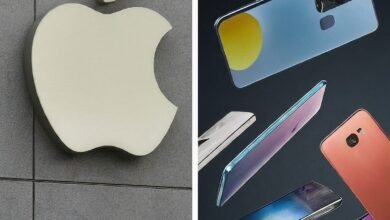Reshaping the Fashion Industry in 2024

Reshaping the fashion industry is undergoing a digital revolution. With the integration of advanced technologies, fashion brands are transforming how they design, manufacture, market, and sell their products. As one of the largest global industries, fashion is now embracing innovation like never before. From AI-powered design tools to blockchain in supply chains, let’s explore the top technology trends reshaping the fashion industry in 2024.
Artificial Intelligence (AI) Revolutionizing Fashion
Artificial intelligence has become a game-changer for the fashion industry. It is now used by brands to enhance customer experiences, forecast trends, and manage inventories. AI-driven chatbots, for example, help consumers navigate online stores, offering personalized product recommendations based on their shopping history.
Generative AI, which became mainstream in 2023, is revolutionizing design. Designers can now use AI to create virtual samples in minutes, reducing the time and materials needed for traditional sample production. This technology allows brands to respond quickly to consumer trends, creating a more efficient and sustainable supply chain.

Subheading: AI for Trend Forecasting and Supply Chain Management AI also plays a crucial role in predicting trends. By analyzing data from fashion designers, influencers, and customer preferences, AI can forecast which styles will dominate upcoming seasons. This helps brands produce the right quantities at the right time, reducing overproduction and waste.
Novel Fabrics: Sustainability Meets Technology
Sustainable fashion is no longer just a buzzword; it’s a growing movement. Novel fabrics are at the heart of this shift. Innovations such as lab-grown leather, bio-fabricated textiles, and recycled materials are being adopted by more brands, contributing to eco-friendly production.

Subheading: The Rise of Biofabrication is one of the most exciting advancements in fashion. Materials like lab-grown leather and plant-based textiles not only reduce the industry’s reliance on animal products but also cut down on the carbon footprint associated with traditional fabric production.
Internet of Things (IoT) in Smart Fashion
The Internet of Things (IoT) is making waves in the fashion industry by creating smart clothing. IoT-powered garments can monitor the wearer’s health, track physical activity, and even adjust temperature. Smart clothing is particularly popular in the sports and fitness sectors but is also finding its way into everyday fashion.

Subheading: Wearable Tech Integration With IoT, wearable tech has become more fashionable and functional. Smartwatches and fitness trackers are now seamlessly integrated into clothing, allowing consumers to stay connected without compromising style.
Rapid Data Analysis for Quick Adaptation
Fashion brands are using rapid data analysis to stay ahead in a fast-changing market. With the help of big data, companies can track consumer behavior, identify emerging trends, and adapt their collections accordingly. This allows them to create more relevant products and respond quickly to market demands.
Subheading: Real-Time Analytics for Improved Decision Making Real-time data analytics tools allow brands to monitor sales, inventory levels, and customer preferences in real-time. This not only enhances decision-making but also helps companies optimize their supply chains for greater efficiency.
Mobile Commerce: The Future of Shopping
Mobile commerce, or m-commerce, is becoming the preferred shopping method for consumers worldwide. With more people shopping via smartphones, fashion brands are optimizing their websites and apps for mobile devices, ensuring a seamless shopping experience.
Subheading: The Rise of Mobile Payments Mobile payments are another trend gaining traction in the fashion industry. From Apple Pay to Google Wallet, consumers now have a variety of secure and convenient options to complete their purchases.
Virtual and Augmented Reality (VR & AR) Transforming the Shopping Experience
Virtual and augmented reality are reshaping the way consumers shop. VR and AR allow customers to try on clothes virtually, visualize how products will look in real life, and even attend virtual fashion shows. This immersive experience not only enhances customer satisfaction but also reduces return rates by helping shoppers make more informed decisions.
Subheading: AR-Powered Virtual Try-Ons Several brands, such as Gucci and Tommy Hilfiger, are using AR to let customers virtually try on their products before purchasing. This technology is particularly popular for eyewear, allowing users to see how different styles and frames will look on their faces.
3D Printing: The Future of Customization
3D printing is revolutionizing fashion by enabling brands to produce highly customized products with minimal waste. From accessories to footwear, 3D printing allows designers to create intricate patterns and structures that would be impossible with traditional manufacturing methods.
Subheading: Customization on Demand With 3D printing, customers can order personalized products, tailored to their exact specifications. This not only enhances the shopping experience but also reduces the need for mass production, contributing to a more sustainable fashion ecosystem.
Blockchain for Transparency and Sustainability
Blockchain technology is emerging as a powerful tool for improving transparency in the fashion industry. By using blockchain, brands can track the entire lifecycle of a product, from raw material sourcing to the final sale. This level of transparency allows consumers to make more informed purchasing decisions, ensuring that their clothes are ethically produced.
Subheading: The Role of Blockchain in Supply Chain Management Blockchain can also enhance supply chain efficiency by providing real-time updates on production, shipping, and inventory levels. This reduces the chances of counterfeiting and ensures that consumers receive authentic products.
Conclusion
As we move deeper into 2024, it’s clear that technology is playing a pivotal role in reshaping the fashion industry. From AI-driven design tools to blockchain for supply chain transparency, fashion brands are embracing innovation to stay competitive and meet the demands of modern consumers. These trends not only enhance the customer experience but also promote sustainability and efficiency in the industry.
In this rapidly evolving landscape, staying ahead of technology trends is crucial for fashion brands looking to thrive in the digital age. Whether it’s using AI to forecast trends or leveraging AR for virtual try-ons, the future of fashion is undoubtedly intertwined with cutting-edge technology. Visit Mating Press, Digital Zine, lessinvest.com, tikcotech, make1m.com, fame flicks, and kingdom World for more insights into the digital transformation of industries.
FAQ
1. How is artificial intelligence (AI) used in the fashion industry?
Artificial intelligence is used in fashion for tasks like trend forecasting, inventory management, customer service, and personalized shopping experiences. AI can predict what styles will be popular and even help designers create digital samples, speeding up production.
2. What are novel fabrics in fashion?
Novel fabrics refer to innovative materials like lab-grown leather, bio-fabricated textiles, and recycled materials. These sustainable fabrics help reduce the environmental impact of fashion by offering eco-friendly alternatives to traditional fabrics.
3. How does the Internet of Things (IoT) affect fashion?
The Internet of Things (IoT) powers smart clothing that can monitor health, track activity, and adjust to different conditions. IoT technology is also being integrated into wearable tech, such as smartwatches and fitness trackers, enhancing both fashion and functionality.
4. What role does data analysis play in fashion?
Fashion brands use rapid data analysis to track consumer behavior, monitor trends, and adapt their collections quickly. Real-time analytics provide insights into customer preferences, enabling brands to make more informed decisions on what to produce and how to market it.
5. What is mobile commerce in fashion?
Mobile commerce, or m-commerce, refers to shopping through mobile devices like smartphones and tablets. Fashion brands are optimizing their online stores for mobile to create a seamless shopping experience for consumers on the go.
6. How is virtual reality (VR) and augmented reality (AR) changing the fashion industry?
Virtual and augmented reality allow consumers to try on clothes and accessories virtually before making a purchase. These technologies also enable virtual fashion shows and digital showrooms, enhancing the overall shopping experience.
7. How is 3D printing used in fashion?
3D printing in fashion allows brands to create customized clothing and accessories with intricate designs. It reduces waste by producing items on demand, eliminating the need for large-scale production.
8. What is blockchain’s role in fashion?
Blockchain technology is used to track the entire lifecycle of fashion products, from material sourcing to final sale. It promotes transparency in the supply chain and ensures that consumers can verify the authenticity and ethical production of the items they purchase.
9. Why are sustainable practices important in fashion?
Sustainable practices are crucial for reducing the environmental impact of fashion. Technologies like novel fabrics, 3D printing, and blockchain are helping brands adopt eco-friendly methods, minimize waste, and provide transparency in their production processes.
10. What is the future of fashion technology?
The future of fashion technology lies in further integrating AI, 3D printing, AR, and blockchain to enhance sustainability, personalization, and consumer experiences. Brands that embrace these innovations will be better equipped to meet the demands of the fast-changing fashion landscape.



